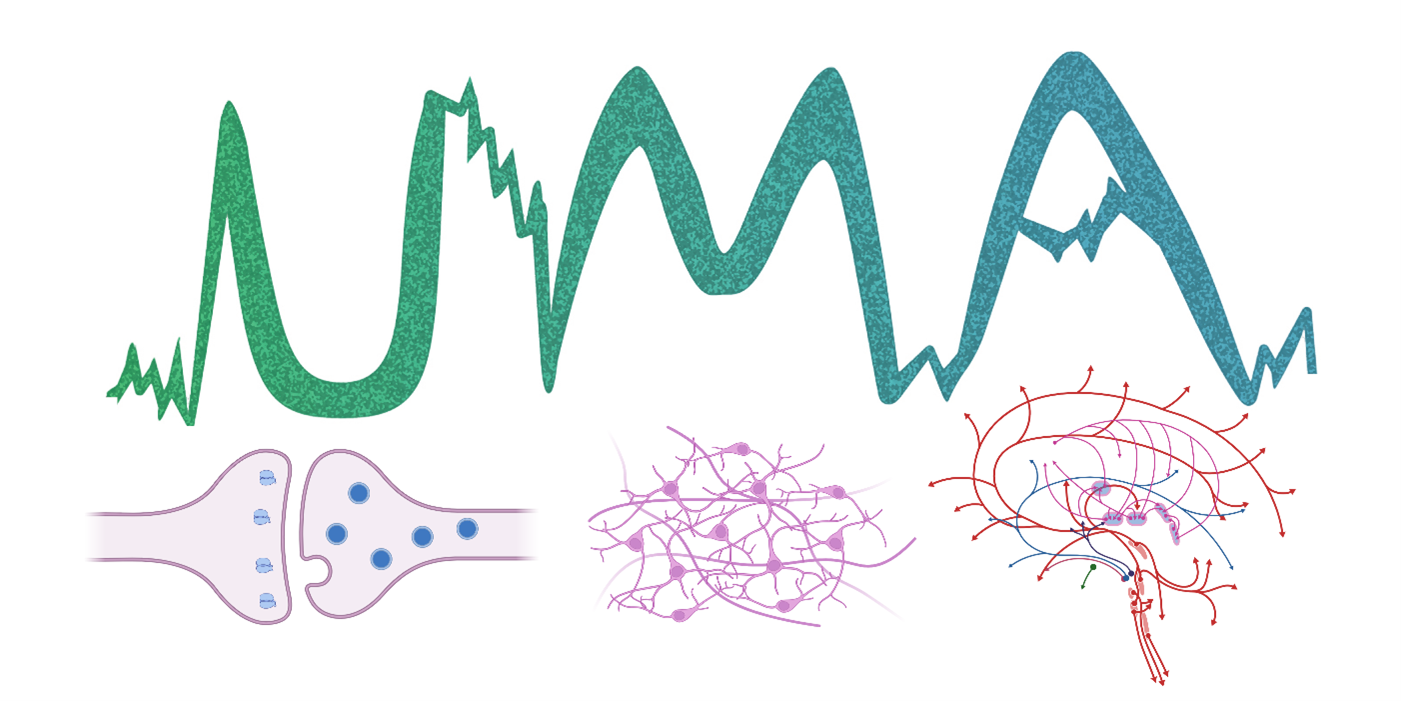Unit on Motivation and Arousal

Contact Information
- Office: 301-451-1150
- Lab: 301-443-4112
- Mailing Address
NIH\NIAAA\LIN\UMA
5625 Fishers Lane, Rm TS-20A
Rockville, MD 20850
Overview of the Lab
Overview of the Lab
To survive all animals must meet basic needs that are guided by their physiological state. The behaviors an animal performs to satisfy these needs are called motivated behaviors. However complex a motivated behavior may be – whether simple, like following an enticing scent to a tasty treat, or complex, like a specialized courtship-mating ritual in order to reproduce – in the end all motivated behaviors can categorized in one of two ways – either to approach something positive, or withdraw from something negative. Every animal, from simple single celled organisms to the highly complex and intelligent human, must perform these two basic behaviors in order to survive – i.e. move towards life sustaining stimuli and away from life threatening stimuli. A clear, and to our group the most interesting, difference between an amoeba moving towards light and a mouse moving towards a delicious sugar pellet, is that while they are both approach-type behaviors, we recognize that the mouse is behaving in a goal directed manner, whereas the single-cell amoeba is moving towards the light in a merely reflexive manner driven directly by molecular changes associated with being showered by light from one direction. For creatures, like the mouse in the above example, capable of goal-directed approach and withdrawal behaviors, we appreciate the motivated rather than reflexive, aspects of these behaviors and describe them as seeking and avoidance. Seeking behaviors are purposeful approach-type behaviors towards a goal called a reward. In contrast, avoidance behaviors are purposeful withdrawal-type behaviors away from something negative, i.e. aversion or aversive stimulus. Being such fundamental behaviors, it is not difficult to recognize that maladaptation in these behaviors can drive debilitating psychiatric disorders. Take for example anxiety, where avoidance behavior is overactive, or substance use disorders, where seeking behavior becomes highjacked towards things that may drive negative consequences. An overarching interest in the Unit on Motivation and Arousal is to understand the neural mechanism of seeking and avoidance behavior to ameliorate these psychiatric illnesses.
Sleep disturbance is an underappreciated and understudied common feature of many, if not all, psychiatric disorders. Atypical sleep patterns and poor sleep quality are often reported by patients with substance use disorders, patients with depression and anxiety, obsessive compulsive disorders, and even schizophrenia. Additionally, many individuals suffering from these disorders report sleep disturbance as a consequence of their disorder, and vice-versa, a history of sleep problems can increase the likelihood of a person developing a psychiatric illness. It is not surprising, then, that the neural substrates involved in many psychiatric disorders are also implicated in sleep. One of the more striking examples of overlap between sleep pathology and psychiatric illness is in substance use disorder – where poor sleep quality is: (1) a common attribute of active drug use, (2) a strong symptom of drug withdrawal, and (3) a powerful predictor of relapse during abstinence. Despite the close relationship between sleep and substance abuse, there is a dearth of preclinical research focused on characterizing and understanding the neural mechanisms that govern this overlap. Another overarching aim of the Unit on Motivation and Arousal is to elucidate these mechanisms and their potential role in behavioral maladaptation during drug withdrawal.
Research Projects
Mission Statement
The mission of the Unit on Motivation and Arousal (UMA) is to understand how brain systems controlling motivated behaviors and sleep/arousal processes interact to drive maladaptive behaviors. We believe understanding the neural mechanisms of this interaction can lead to novel therapeutic targets.
Techniques used in our laboratory include optogenetics, chemogenetics, fiber photometry, single-unit electrophysiology, EEG/EMG sleep polysomnography, mouse transgenics, immunohistochemistry, and behavioral assays.
Some current projects include:
- Circuit manipulations to dissect neural mechanism of reward seeking
- Understanding the roles of cannabinoids in sleep/arousal
- Evaluating the causal role of sleep disturbances during drug abstinence in mediating withdrawal symptoms during wakefulness
- Developing pre-clinical behavioral assays to model drug withdrawal symptoms
Lab Members



Selected Publications
Articles
- A.J. Kesner, Y. Mateo, K.P. Abrahao, S. Ramos-Maciel, M.J. Pava, A.L. Gracias, R.T. Paulsen, H.B. Carlson, D.M. Lovinger. Changes in striatal dopamine release, sleep, and behavior during spontaneous Δ-9-tetrahydrocannabinol abstinence in male and female mice. Neuropsychopharmacology. 2022 Apr 27:1-3.
- Yang, Y. Hu, A.D. Talishinsky, C.T. Potter, C.B. Calva, L.A. Ramsey, A.J. Kesner, R.F. Don, S. Junn, A. Tan, A.F. Pierce, C. Nicolas, Y. Arima, S.C. Lee, C. Su, J. M. Coudriet, C.A. Mejia-Aponte, D.V. Wang, H. Lu, Y. Yang, S. Ikemoto. Medial prefrontal cortex and anteromedial thalamus interaction regulates goal-directed behavior and dopaminergic neuron activity. Nature Communications. 2022 Mar;13:1386.
- A.J. Kesner, R. Shin, C.B. Calva, R. F. Don, S. Junn, C.T. Potter, L.A. Ramsey, A.F. Abou-Elnaga, C. G. Cover, D.V. Wang, H. Lu, Y. yang, S. Ikemoto. Supramammillary neurons projecting to the septum regulate dopamine and motivation for environmental interaction in mice. Nature communications. 2021 May 14;12(1):1-8.
- G. Cover, A.J. Kesner, S. Ukani, E.A. Stein, S. Ikemoto, Y. Yang, H. Lu. Whole brain dynamics during optogenetic self-stimulation of the medial prefrontal cortex in mice. Communications biology. 2021 Jan 14;4(1):1-8.
- Juczewski, J.A. Koussa, A.J. Kesner, J.O. Lee, D.M. Lovinger. Stress and behavioral correlates in the head-fixed method: stress measurements, habituation dynamics, locomotion, and motor-skill learning in mice. Scientific reports. 2020 Jul 22;10(1):12245.
Reviews
- A.J. Kesner, C.B. Calva, S. Ikemoto. Seeking motivation and reward: Roles of dopamine, hippocampus, and supramammillo-septal pathway. Progress in Neurobiology. 2022 May 1;212:102252.
- A.J. Kesner, D.M. Lovinger. Cannabis use, abuse, and withdrawal: Cannabinergic mechanisms, clinical, and preclinical findings. Journal of neurochemistry. 2021 Jun;157(5):1674-96.
- A.J. Kesner, D.M. Lovinger. Cannabinoids, endocannabinoids and sleep. Frontiers in molecular neuroscience. 2020:125.
- A.J. Kesner, D.M. Lovinger. Wake up and smell the dopamine: new mechanisms mediating dopamine activity fluctuations related to sleep and psychostimulant sensitivity. Neuropsychopharmacology. 2021 Mar;46(4):683-4. Invited commentary.
Other Lab Resources
Alumni
Stephanie Ramos-Maciel, B.S.
Currently: Ph.D. program in Neuroscience at University of Michigan
Nina Westcott, B.S.
Currently: M.D. program at University of North Carolina
Zev Jarrett, B.S.
Currently: Ph.D. program Biomedical Sciences at Vanderbilt University.
Special Volunteer
Hartley Carlson
Undergraduate Student, Univ. of Maryland
Summer Fellows
2022
- Awura Bema, High School Scientific Training & Enrichment Program 2.0 (HiSTEP 2.0), Undergraduate Student at Univ. of Maryland
- Victoria Chamberlain, College Summer Opportunities to Advance Research (CSOAR), Undergraduate Student at Brown University.
2021
- Kimia Samieinejad, College Summer Opportunities to Advance Research (CSOAR), Undergraduate Student at University of Maryland.


